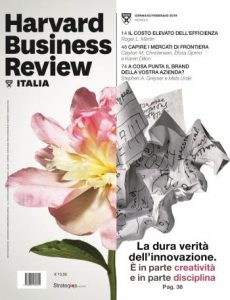
The face of emotions
10 February 2019
2018, ESCAPE FROM SOCIAL MEDIA?
25 February 2019The future of work

Globalisation and technological innovation are the key words to understand what has happened, and what will increasingly happen, in the impressive transformations that have affected the world of work in recent years. They are also the best premise for questioning what is happening in the people, within the organisations involved in these powerful dynamics. New ways of organising production processes are asserting themselves, atypical and autonomous forms of work are emerging, there is a major transformation of trades, professions, but above all of the skills needed to cope with a set of challenges that still await a full response.
For a long time, working meant going to a precise place, a physical space, which represented a social environment of aggregation capable over time of generating a “sense of belonging” and an “idea of community.” All this took place in a defined time, punctuated by precise rituals that separated the time of work from the time of social relations – private and community – what with the advent of modernity would be defined as ‘leisure time’. Today very little is left of all this, workplaces are increasingly losing pieces of their identity. In the name of productive efficiency, it is decided to move work, to delocalise it, or to replace physical space with ‘digital places’, virtual spaces. The loss of rootedness dissolves the sense of belonging; time for work and personal time become confused. In the digital dimension we are always connected, relationships know no limits and are not subject to time barriers. Connection’ has replaced ‘bonding’.
In this scenario of unstoppable transformation, which is vast and complex, and often full of ambiguities, one of the issues debated since the early 1990s has been the so-called flexibility of work, i.e. the place to work and the time in which to work. Agile work, or ‘smart work’ as it may be called, has accompanied an epochal turning point in all its stages of development, the affirmation of a new way of working, undoubtedly more flexible and, at least in its intentions, more balanced. But what does working ‘remotely’ imply and entail? What does it mean for people? What changes in the management of such a structured organisation? What are the impacts for those with leadership responsibilities? It is indeed the leadership style that is the element of corporate culture exposed to the most profound changes.
The first step is the need to revise the structure of the relationship between people: from a hierarchical logic, based on control – often direct, immediate, ‘on sight’ – to a logic that relies on trust between and towards people. And not only that: it is necessary to move from a rigid observance of corporate hierarchy to the value of skills and belonging to a professional network.
The management paradigm is transformed: it becomes necessary to focus on achieving objectives, overcoming the old constraint of performance measures such as presence and time. For the leader, the ability to delegate, to grant spaces of autonomy and an increase in the collaborator’s responsibilities becomes fundamental. Learning to accept that the co-worker completes the work by following his or her own path, with results that are sometimes even more effective than he or she would have done in the old way. All this represents not only a change of mindset, but a real transformation in the way of being a leader, especially in having assimilated the value of diversity, which allows one to appreciate ways of working different from one’s own.
A perspective in which a flexible and empathic mindset becomes a prerequisite for success. Entering into relations with those who work a few thousand kilometres from our desk and whom we may only occasionally meet requires a high level of awareness that can only arise from precise questions. One has to be willing and able to explore social contexts, cognitive processes and relational styles, organisational and personal cultures that differ from our own. Understanding values, motivations and expectations of the future.
And all this is no longer new. Evolution is unstoppable and the need to ground concrete actions that will lead us to improve our management effectiveness and, consequently, the success of the organisation and its people, becomes an imperative that can no longer be postponed. Will we be able to reconcile the demands for efficiency coming from organisations engaged in innovation processes, with the needs and motivations of the people involved?
The world of training is faced with a great challenge; it has always played an important and strategic role in organising and facilitating change processes by making major changes comprehensible and acceptable. And when continuous change becomes the only constant, the ‘learning organisation’, the organisation that transforms itself into a ‘learning system’, capable of integrating ideas, knowledge and experience within a common heritage, represents the only answer capable of combining efficiency with the development and personal growth of individuals. It is widely believed that in the next 10-20 years we will witness changes of historic proportions in the world of work; we must commit ourselves right now to building a future capable of governing these processes with efficiency, far-sightedness and a sense of responsibility.



